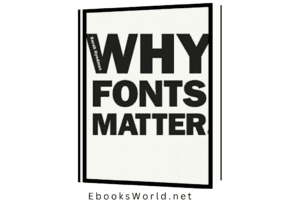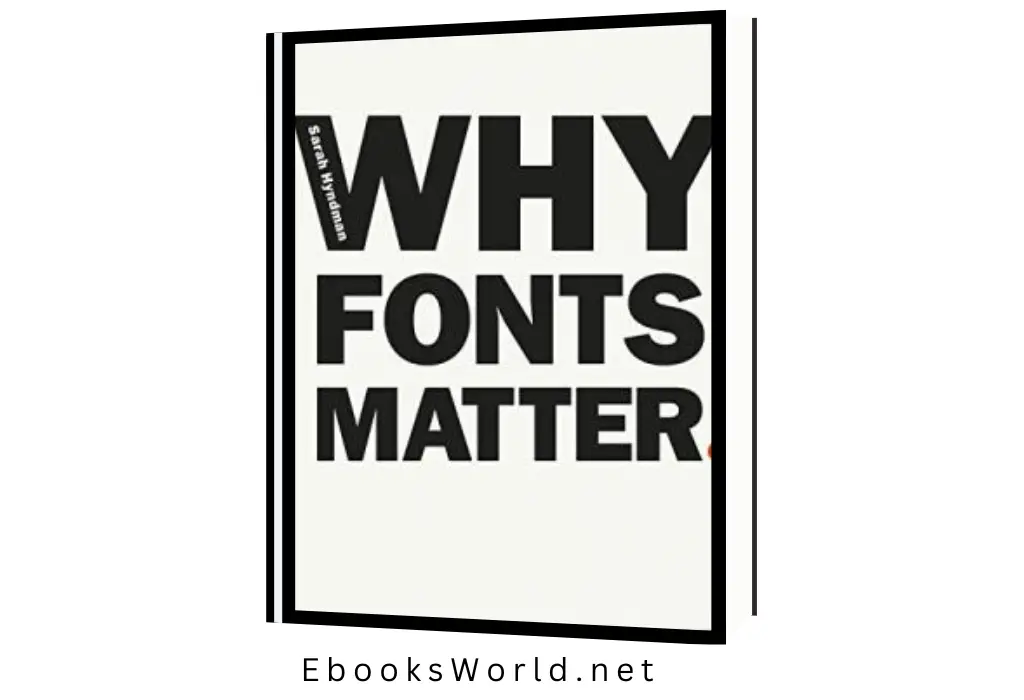Why Fonts Matter

Ratings
“Why Fonts Matter” by Sarah Hyndman is a fascinating exploration of the impact that fonts have on our daily lives, our perceptions, and our emotions. Hyndman, a graphic designer and type enthusiast, takes readers on a journey through the world of typography, revealing the hidden messages and cultural influences embedded in the fonts that surround us.
Introduction: The Power of Fonts
Hyndman begins by asserting that fonts are not just neutral vessels for text but powerful conveyors of meaning. Fonts influence our decisions, shape our perceptions, and even impact our taste buds. The author introduces the concept of “typographic voice,” arguing that fonts have the power to speak to us on a subconscious level.
Chapter 1: Typography as a Second Language
In this chapter, Hyndman introduces the idea that typography is a form of non-verbal communication. Fonts, like words, have distinct personalities and can convey emotions and messages. The chapter explores the psychological and cultural associations we make with different typefaces, demonstrating how fonts become a visual language that adds layers of meaning to written words.
Chapter 2: Reading the Past
The author delves into the historical evolution of fonts, tracing their development from handwritten scripts to the digital age. This historical context helps readers understand how certain fonts carry cultural baggage and evoke specific time periods. Hyndman illustrates how fonts can be a visual representation of social and technological progress, making readers more aware of the historical nuances embedded in the fonts they encounter daily.
Chapter 3: Font Psychology
Hyndman explores the psychological impact of fonts, revealing how they can influence our mood, trust, and decision-making. The chapter examines research studies that demonstrate the emotional responses people have to different typefaces. For example, a serif font might convey tradition and reliability, while a sans-serif font can evoke a sense of modernity and simplicity.
Chapter 4: The Personality of Type
Building on the psychological aspects, this chapter categorizes fonts into personalities. Hyndman introduces readers to various font personas, from the confident and authoritative to the friendly and approachable. Through real-world examples and case studies, she illustrates how companies and brands use specific fonts to communicate their values and connect with their target audience.
Chapter 5: Fonts in Popular Culture
The influence of fonts extends beyond print and digital media. This chapter explores how fonts permeate popular culture, appearing in movies, TV shows, and even on clothing. Hyndman dissects iconic examples, such as the font used in the opening credits of “Friends” or the distinctive lettering of Coca-Cola, demonstrating how fonts become ingrained in our collective consciousness.
Chapter 6: Fonts on the Menu
Taking a novel approach, Hyndman explores the impact of fonts on our sense of taste. The chapter delves into studies that suggest the typeface on a menu can influence our dining choices. Whether it’s the script-like elegance of a fine dining restaurant or the bold simplicity of a fast-food joint, fonts play a role in shaping our culinary experiences.
Chapter 7: Changing the World with Fonts
The final chapter examines the potential for fonts to drive social and political change. Hyndman showcases examples where typography has been used to convey messages of protest, activism, and unity. Fonts, it seems, can be powerful tools for expressing dissent and inspiring movements.
Conclusion: The Subtle Art of Typography
In the conclusion, Hyndman brings together the threads of her exploration, emphasizing that fonts are not just design choices but powerful communicators that shape our perceptions and influence our behavior. She encourages readers to become more conscious of the fonts they encounter, to appreciate the subtle art of typography, and to recognize the impact that fonts have on our daily lives.
In “Why Fonts Matter,” Sarah Hyndman successfully blends design, psychology, and cultural analysis to make a compelling case for the significance of fonts in our lives. Through engaging anecdotes, insightful research, and practical examples, she demonstrates that the letters we see are not just shapes but powerful carriers of meaning that can influence our thoughts and actions in profound ways.







